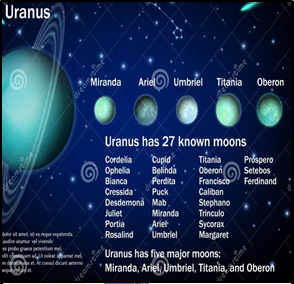MYSTERY OF ARIEL’S SURFACE
Why in the news?
- The Solar System has unresolved mysteries, including the Sun’s hot corona and Titan’s dense atmosphere.
- Triton’s opposite rotation and potential shared origin with Pluto have been recently explained.
About Discovery on Ariel:
- NASA’s James Webb Space Telescope detected a potential subsurface ocean on Uranus’s moon Ariel.
- Despite its distance from the Sun, Ariel’s surface has frozen CO₂, which should have vaporised.
Findings and Implications:
- Carbon monoxide found on Ariel suggests either lower surface temperatures or a subsurface ocean producing carbon oxides.
- Cracks and grooves on Ariel’s surface may be evidence of icy slope and carbon compounds gushing out.
- Signs of carbonate minerals indicate water-rock interaction, potentially confirming Ariel as another water-bearing moon.
source:lotusarise
About the Uranus Mission:
About Uranus: Position: Seventh planet from the Sun, discovered by William Herschel in 1781. Classification: Gas giant with a unique axial tilt of 98°, causing extreme seasonal variations. Physical Characteristics:
Unique Features:
|




